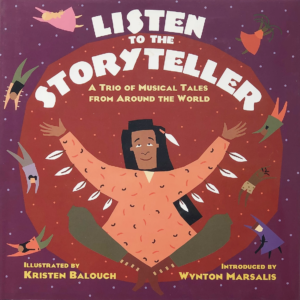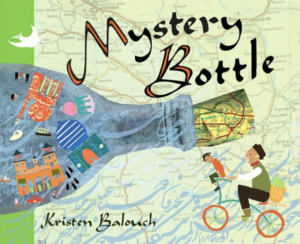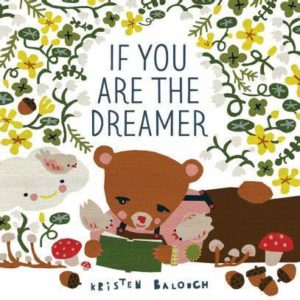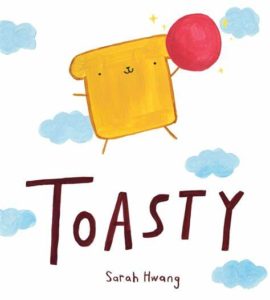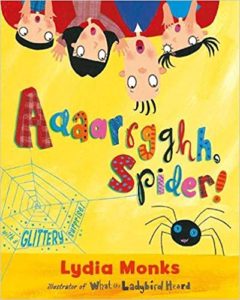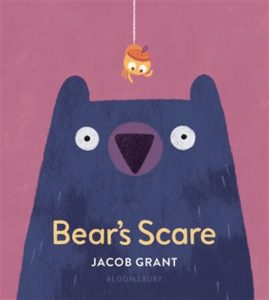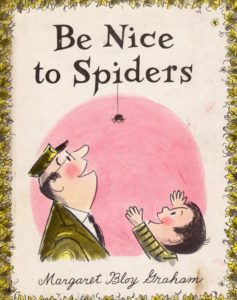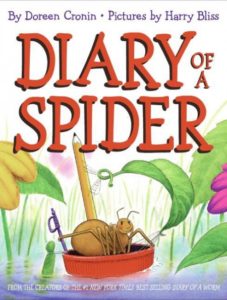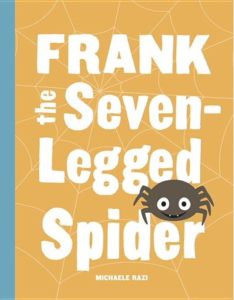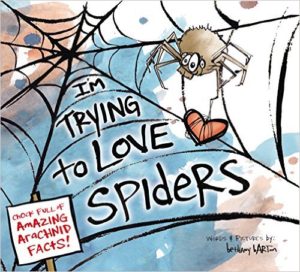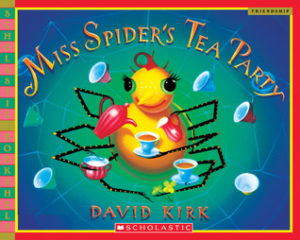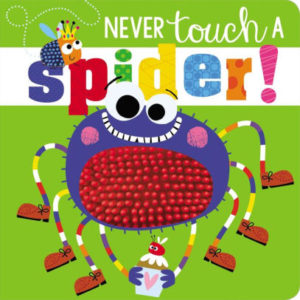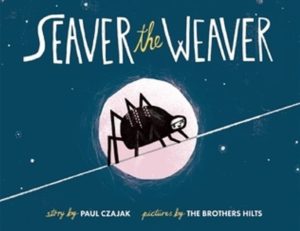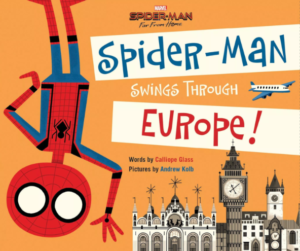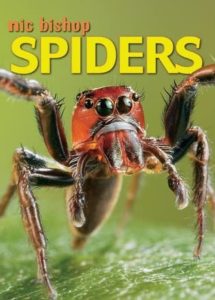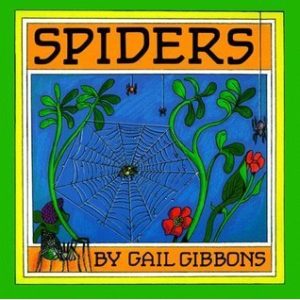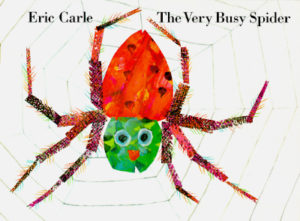This month’s PB review is by Ryan G. Van Cleave (Owner/Operator of Only Picture Books) and freelance illustrator Edna Cabcabin Moran.
–Ryan’s Review of the Writing–
Pura Belpré Award-winning author Margarita Engle’s A Song of Frutas tells the story of a young child who visits “mi abuelo” (Spanish for “my grandfather”) in Cuba and helps him sell fruit in the streets.
What’s wonderful is how the child watches Abuelo and the other sellers hawking their wares in song, full of “melodies and rhythms.” As Abuelo and the child walk together, “our footsteps are drumbeats,” and “our hands are maracas.” But there’s all manner of music in the air, so Abuelo must sing louder than the rest in order to be heard. This musical theme is embedded all throughout these pages literally, lyrically, and visually.
I’m a fan of how the physical layout of the text tries to mirror the musical rhythms, such as “mangos, lemons, limes, coconuts, melons, oranges, grapefruits, bananas, and pineapples.” Written in vivid colors and staggered down the page, this list of fruits is echoes the multi-vocal song of the street vendors.
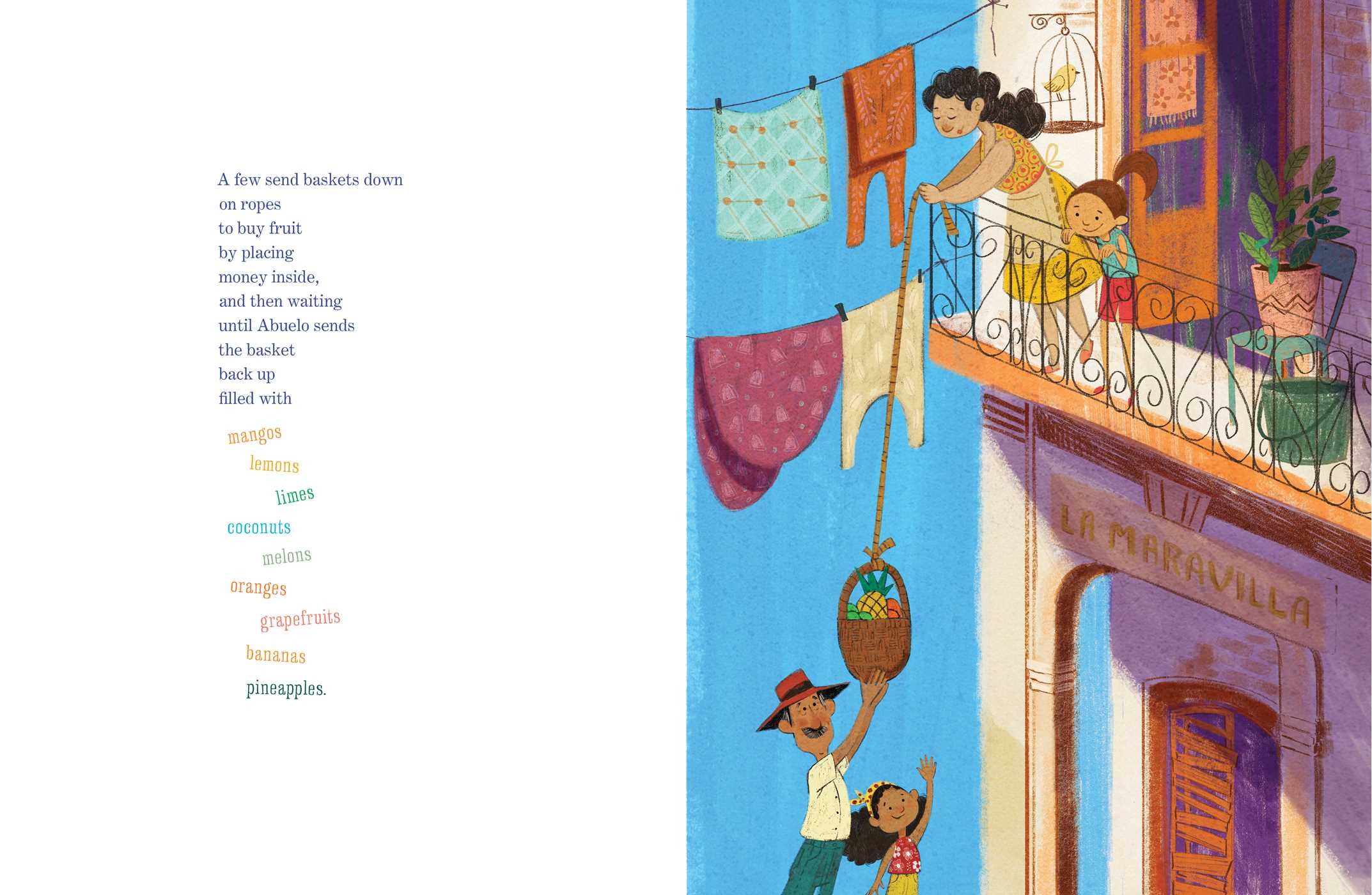
The most tender moment of the story is how the child explains that their favorite visits to Cuba are “on the eve of el año nuevo,” where everyone wants to buy 12 grapes so they can have luck in each month of the coming year. At midnight on New Year’s Eve, the child gobbles 12 grapes to “make one wish per month for the whole coming year.”
The author has a clear message in this book, as the child illustrates by admitting that their last wish is for friendship between the two countries (the US and Cuba). This message re-appears in greater clarity in the Back Matter, citing the “unfair” travel restrictions that keep people from seeing loved ones as often as they’d like.
Let’s go back to the story text itself. Many of the Spanish job titles included in the story are easily explained in the context. That’s wonderfully done. And, at times, we see Spanglish in action, such as how Engle uses “Sabroso” followed by “Tasty.” Giving readers the same meaning from two words in two languages is a very strong technique, and from the Back Matter, this is intentional.
As I read, I wondered if there’d be a Spanish-to-English glossary in the back, or perhaps a pronunciation guide. There isn’t. Maybe there’s no need? I wonder, though, how many readers will, in those early pages, be saying “nah-ran-jah” and “pee-na” for naranja and piña. Hopefully none!
It’s a sweet book with bright, memorable illustrations that offer a glimpse into a very specific part of the world of Cuba. Very nice indeed!
4.25 out of 5 pencils
–Edna’s Review of the Illustrations–
Sara Palacios’ delightful artwork in A Song of Frutas brilliantly underscores Margarita Engle’s heartwarming Spanglish poem and her story of a girl and her beloved Abuelo el frutero. Palacios’ mid-century inspired illustrations are very compelling, but I find them equally potent as a sequential work, enhancing and elevating Engle’s words with a warm, visual narrative imbued with musicality and meaning.
Throughout the book, Palacios’ paintings croon with jewel-tone hues, textured shapes and lines, and an energetic cast of characters. From an artistic standpoint, this dense combination of equally bold colors, patterns, and personalities is hard to pull off. Palacios confidently blends and amplifies these elements in a symphony of movement and white space (a.k.a. composition). What might come across as light and loose stylistically is actually tightly composed.
Palacios’ overall treatment of spreads move with rhythm and musicality–highly-angled collage and expressive lines coming together under Palacios’ deft orchestration. She plays the elements in service of story and tenor. In the opening spread, contrasting colors and values establish that the girl and her abuelo are the main characters overseeing a street that sits under a cerulean blue sky hosting the opening stanza. In the second spread, Palacios directs the readers’ eyes from light pastel words floating in the sky, down the handle of Abuelo’s fruit cart, and across the gutter to the right page, landing onto main characters joyfully singing.
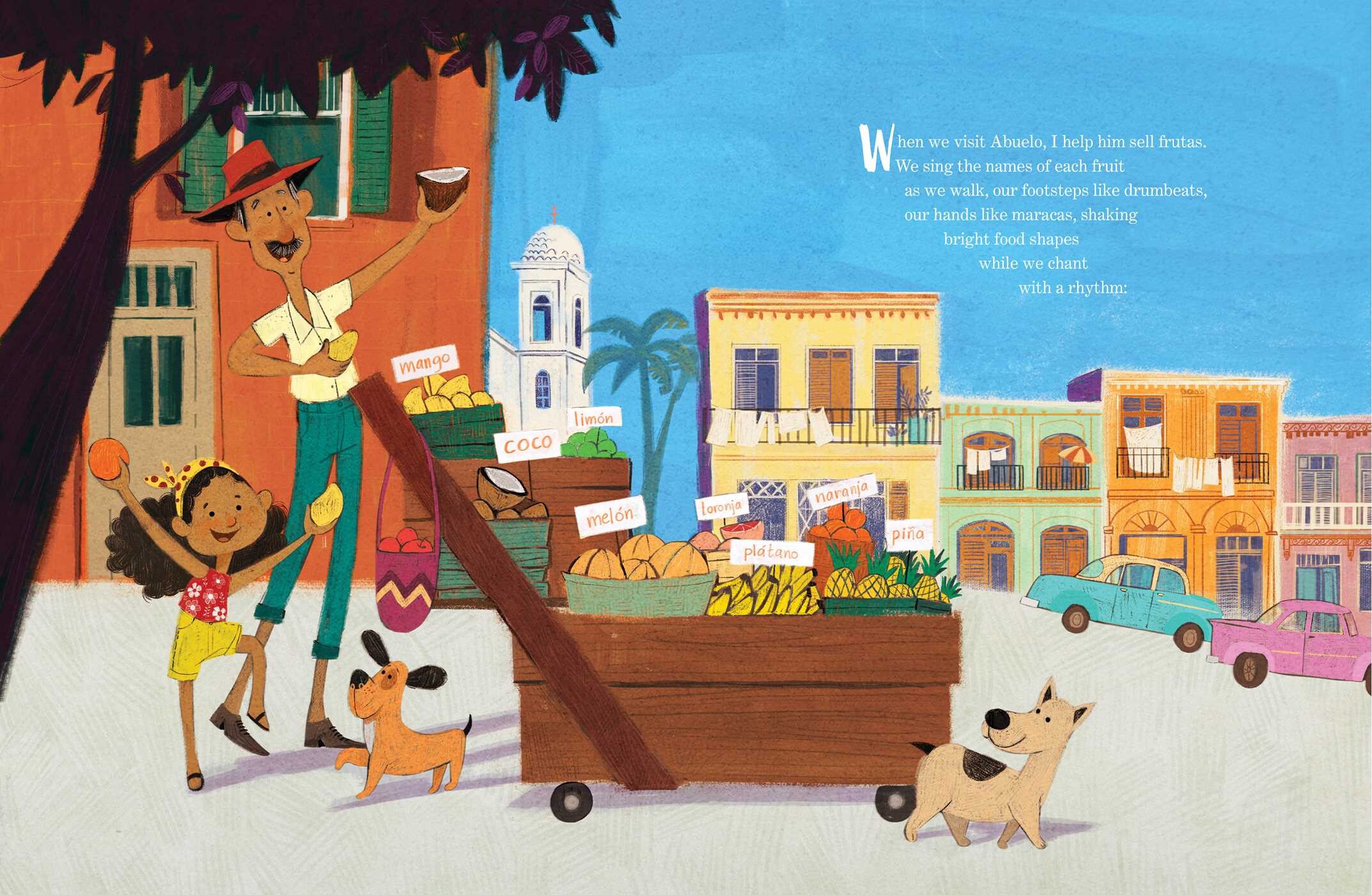
In the third spread, Palacios employs golden browns and bursts of yellow on a building that fills the entire left page. This is balanced at the right by detailed vignettes of people and objects dancing atop a background gradation of soft purple to gray and then to white space with a stanza, at the top.
Palacios switches to a completely different treatment on the next spread where she leaves the left page empty of illustration–a field of white space that holds one long stanza with playful type–and on the opposite side, installs a charming scene of the girl with her abuelo delivering fruit in a basket to a customer high up in a balcony. Palacios’ varied and generous use of white space continues into the middle of the book as other “los pregoneros,” or singing vendors, are mentioned.
Then come the final spreads, beginning with Palacios articulating the poignancy of grapes on New Year’s Eve. After a dramatic sweep of painterly scenes, one after another, Palacios changes from the jewel-tones of Havana to an earth-tone scene in San Francisco. A blue mailbox and a set of blue doors at the US Post Office foreshadow what’s next: A scene accompanying “hopeful poems flying like songbirds” followed by a scene of the girl and Abuelo embraced in a hug–all happening beneath cerulean blue skies.
Flat, collage-style artwork has the potential for visual tangents which create ambiguity and confusion between objects. I found a few instances in Palacios’ artwork such as the open market scene where, at first glance, a basket of fruit appears to be on the same plane as a woman’s head, jutting out like a headdress. But such tangents are minor and do not detract from the story. I feel satiated after reading this picture book, thanks in great part to Palacios’ gorgeously detailed and stylized illustrations—each spread hanging together with all the rest and giving voice to what matters in the story like the soft glowing festival lights in Palacios’ nighttime scenes.
4.75 out of 5 crayons
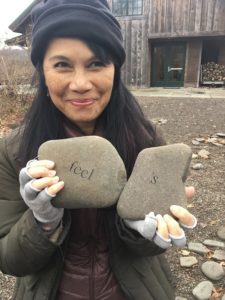 Edna Cabcabin Moran is an author/illustrator, multi-disciplined artist, educator, and advocate for youth voices and diversity in publishing. She is also a dancer with acclaimed hālau hula and dance company, Nā Lei Hulu I Ka Wēkiu, and a teaching artist specializing in STEAM and integrative arts. She has served on several nonprofit committees including We Need Diverse Books and Alternative in Action’s Project Youthview: The Power of Youth in Film.
Edna Cabcabin Moran is an author/illustrator, multi-disciplined artist, educator, and advocate for youth voices and diversity in publishing. She is also a dancer with acclaimed hālau hula and dance company, Nā Lei Hulu I Ka Wēkiu, and a teaching artist specializing in STEAM and integrative arts. She has served on several nonprofit committees including We Need Diverse Books and Alternative in Action’s Project Youthview: The Power of Youth in Film.
IG & Twitter: @kidlitedna


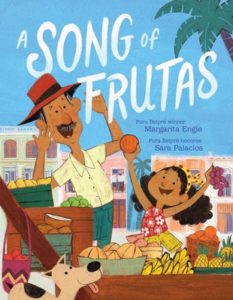
 This month’s Industry Insider interview is with Elizabeth Bennett, a Senior Literary Agent and Partner at Transatlantic Agency. She’s spent her entire career in the children’s publishing industry, having worked in marketing, product development, and editorial at such companies as Scholastic, Reader’s Digest, and Houghton Mifflin Harcourt. One especially cool thing she did at
This month’s Industry Insider interview is with Elizabeth Bennett, a Senior Literary Agent and Partner at Transatlantic Agency. She’s spent her entire career in the children’s publishing industry, having worked in marketing, product development, and editorial at such companies as Scholastic, Reader’s Digest, and Houghton Mifflin Harcourt. One especially cool thing she did at 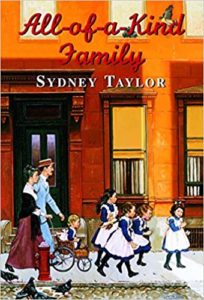
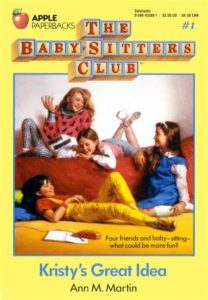
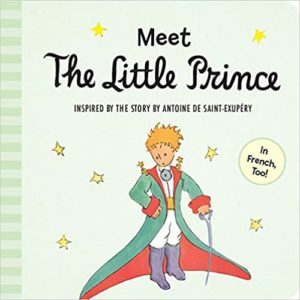
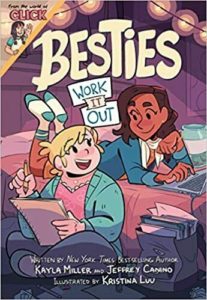
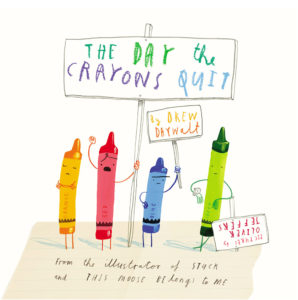
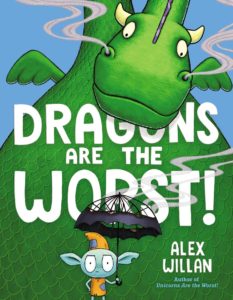
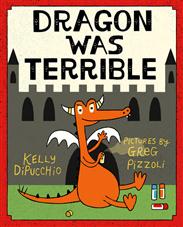
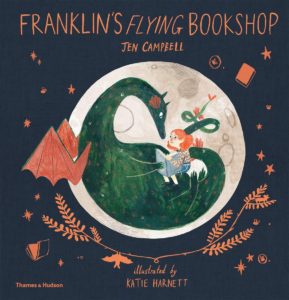
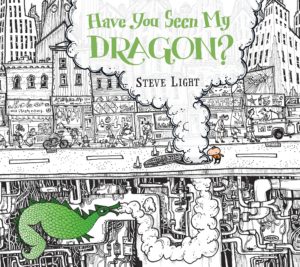
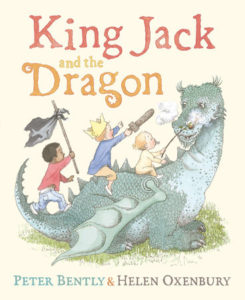
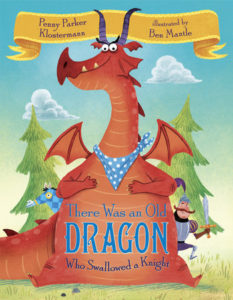
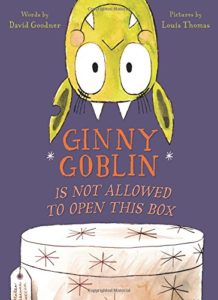
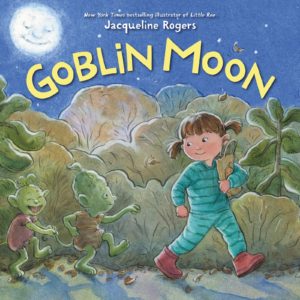
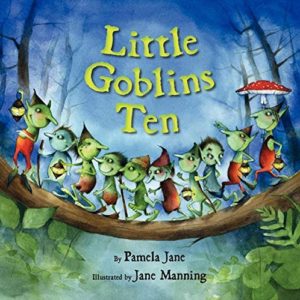
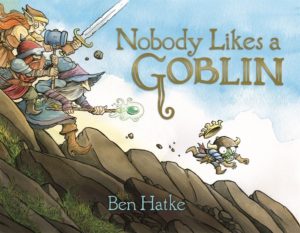
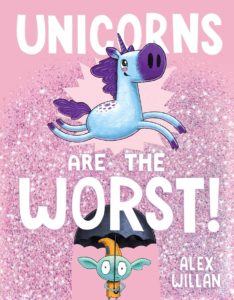
 This month’s picture book creator interview is with Kristen Balouch, an author, illustrator, artist, and designer living in Brooklyn. Few creatives give as much access to their workspace in the way Kristen does: “I live in a tiny apartment in Williamsburg, Brooklyn that I renovated with salvaged finds. I designed the apartment around this twelve-foot table. Everything happens at this table: manuscript sorting, book illustrations, editorial illustrations, hand-lettering, fabric collections, daydreaming, birthday cakes, and dinner parties.”
This month’s picture book creator interview is with Kristen Balouch, an author, illustrator, artist, and designer living in Brooklyn. Few creatives give as much access to their workspace in the way Kristen does: “I live in a tiny apartment in Williamsburg, Brooklyn that I renovated with salvaged finds. I designed the apartment around this twelve-foot table. Everything happens at this table: manuscript sorting, book illustrations, editorial illustrations, hand-lettering, fabric collections, daydreaming, birthday cakes, and dinner parties.”
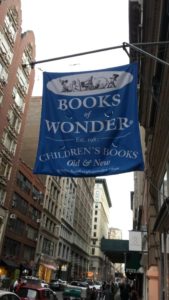 Later, as an undergraduate there, I had the most wonderful English professor,
Later, as an undergraduate there, I had the most wonderful English professor, 